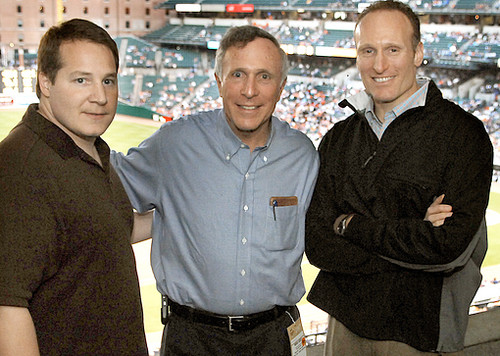 Right now, the temptation is to lump the Indians and Browns together in one heaping pile of Cleveland sports suck.
Right now, the temptation is to lump the Indians and Browns together in one heaping pile of Cleveland sports suck.They sure look like two rudderless franchises that offer little in the way of hope for winning in the foreseeable future. The Browns just opened Eric Mangini's first season at the helm with a couple of putrid losses. The Indians might win another game this season. Or they might not. If they don't, they'll break 100 losses for the first time in 18 years.
Both teams seem psychologically beaten. The Browns' competitive resolve breaks around halftime every week. The Indians' competitive resolve broke around Sept. 1, give or take a few months.
The Browns and Indians, for now, both seem resigned to the fact that they are league doormats. That's the truth, but when your teams lose their will to fight, it's pure agony to watch. Which is why televisions across northeast Ohio have been steadily migrating away from Tribe game telecasts to anything else. The Browns, who usually rule the Cleveland airwaves on Autumn Sundays, are a few more disastrous losses from following suit.
The Browns and Indians have a lot of bad, non-competitive, unwatchable traits in common. But there is a difference between Cleveland's downtrodden football team and Cleveland's downtrodden baseball team, at least from where I sit and type.
The Browns are this bad. The Indians, even after purging the roster of almost all competent veterans, aren't.
The Browns simply do not have the talent to compete at a high level. In a league where draft success separates the swans from the ugly ducklings, where trades seldom happen, let alone trades yielding franchise building blocks, the Browns have whiffed time and time again. Their roster shows it, and even the coaching job of a lifetime by Eric Mangini probably wouldn't put these Browns on the fast track to playing meaningful games in December and January.
The Indians certainly have had their own problems with drafting, coupled with Mark Shapiro's well-documented trade and free agency misadventures. But unlike the Browns, the Indians have done enough right to have the talent to stay competitive, to even contend in a less-than-powerful American League Central.
That's why the Indians don't get off the hook so easily in my book. When the Indians underachieve for five months, followed by a September meltdown, I'm not as willing to sit back and let things play out. I want someone to get under the hood and start tuning up the engine.
Unlike the Browns and their systemic issues, which seem to start at the beginning of the free agent signing period and end after Game 16 of another cruddy season, the Indians' problems have less to do with stockpiling talent and more to do with how that talent is cultivated and coached.
It's unfair to lay all the blame for the 2009 collapse at the feet of Eric Wedge, but it's removed just about every shred of remaining ambiguity over whether it's time for a new manager and coaching staff. It's definitely time for a change. Not because Wedge is a horrible manager, as some fans contend, but because it's time to see what a new boss -- preferably one from outside the organization -- can do with the lump of wet-but-moldable clay that is now the Tribe's roster.
Looking at talents like Matt LaPorta, Michael Brantley, Shin-Soo Choo, Asdrubal Cabrera and the forthcoming Carlos Santana, it's easy to sit back and daydream about what the Indians could become if the right group of leaders can put the puzzle pieces together. Even the embattled pitching staff has undeniable -- if unpolished -- young talent in Justin Masterson, Tony Sipp, Chris Perez, Hector Rondon, David Huff and Fausto Carmona, who desperately needs a stronger guiding hand in his struggle to prove that his 2007 campaign wasn't a fluke.
The Indians stopped stumbling a while ago. They've stopped staggering and even crawling. They'll sort of ooze across the finish line on October 4. But once this nightmare of a season ends, it's time for Mark Shapiro to pick up his steamrolled team and re-shape them, starting with a new manager and coaching staff.
Success is not guaranteed, of course, but it's a logical starting point for a team that should feel as though it's good enough to play meaningful games next September. Maybe they'll need a couple of seasons of maturation before playoff contention is actually realized, but it's a worthy goal that the Tribe's young roster should feel empowered to shoot for.
If several seasons under a new coaching staff yields no playoff contention, it might be time to make changes higher up the Tribe's organizational ladder. But for now, it's time to start small and think big. That's in contrast to the Browns, who always seem to make big moves with small results.
As the Indians euthanize their season a week from Sunday in Boston, the Browns will take the field at home against the Bengals, in all likelihood searching for their first win. They'll also be searching for a lot more: leadership, a team identity and talent at key positions. The same problems they haven't been able to address in a decade's time.
There is a difference between underachieving and being a low achiever. It's the difference between the Indians and Browns. And it's why, despite the built-in parity advantages in the NFL, I fully expect to see the Tribe back in the playoffs before the Browns.
Sep 25, 2009 7:00 PM